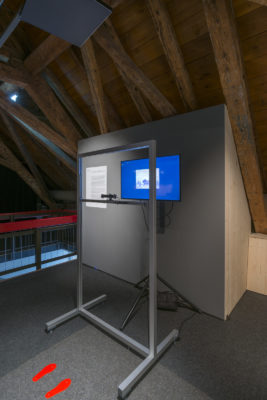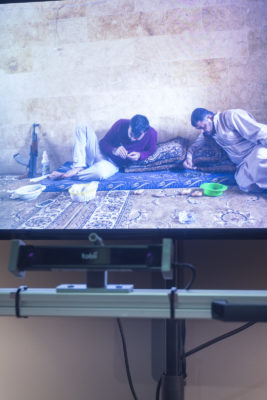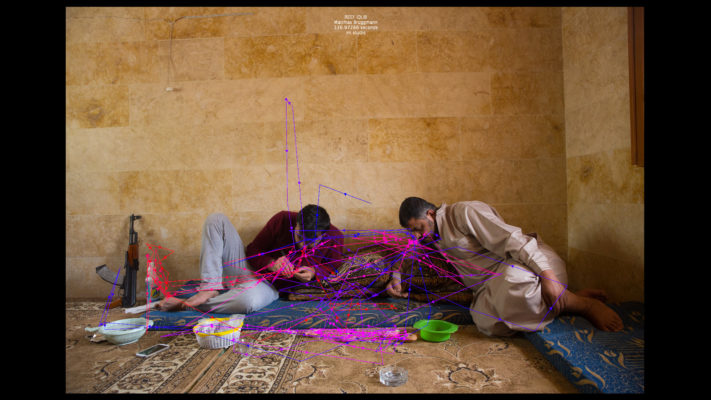The residency allows you to take advantage of being in an exposure situation to develop the system, both from a technical and experiential point of view. The visitor is invited to position himself in front of a screen and look at an image of the photographer Matthias Bruggmann. A sensor follows his gaze and analyses which area of the image he is looking at. Comments (audio) are associated with each area and are broadcast on speakers as the gaze sweeps through the work. In order to avoid repetition (eyes being in perpetual motion), the algorithm will have to detect the viewer's points of interest and provide the information gradually based on the analysis of the path taken.
The system unveiled on 17 October is deliberately sober. The first step of the project is to improve the software and interaction with the Eye Tracking system. From this point on, various development possibilities will be evaluated, such as adding additional media (e. g. triggering videos) or generating a trace of the viewer's path to the work (e. g. in the form of a print). Recorded and anonymized, the data collected can also be used to produce graphical visualizations illustrating travel time, route taken or areas of interest.
Members of the INT studio will be regularly present in the exhibitions to see how the device is perceived by visitors: is it too intrusive or does it increase the work in a relevant way? The exact form of the project at the end of the residency is not yet known, but must meet a need for generalization of the process in order to do without the screen and use it directly on a work of art.









